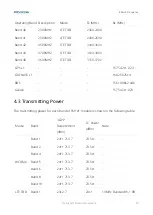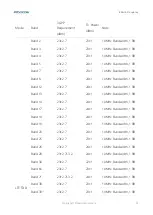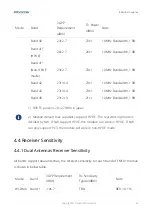
3 Application Interface
Copyright © Fibocom Wireless Inc.
37
SIM_DETECT is active high. It can be swapped to active low by AT CMD.
3.4.4
USIM Design
The SIM card circuit design should meet the EMC standards and ESD requirements with
the improved capability to resist interference, to ensure that the SIM card can work stably.
The following guidelines should be noted in design:
The SIM card slot should be placed as close as possible to the module, and away from
the RF antenna, DC/DC power supply, clock signal lines, and other strong interference
sources.
The SIM card slot with a metal shielding housing can improve the anti-interference
ability.
The trace length between the SIM card slot and the module should not exceed 100mm,
or it could reduce the signal quality.
The UIM_CLK and UIM_DATA signal lines should be isolated by GND to avoid crosstalk
interference. If it is difficult for the layout, the whole SIM signal lines should be
wrapped with GND as a group at least.
The filter capacitors and ESD devices for SIM card signals should be placed near to the
SIM card slot, and the ESD devices with 22~33pF capacitance should be used.
3.5
USB Interface
The FM101 module supports USB2.0 which is compatible with USB High-Speed (480 Mbit/s)
and USB Full-Speed (12 Mbit/s). At the same time, FM101 also supports USB 3.0 5Gbit/s to
achieve ultra-high-speed data transmission, which is used to meet the high-speed
transmission requirements of LTE mobile networks. For the USB timing and electrical
specification of FM101 module, please refer to Universal Serial Bus Specification 2.0” and
“Universal Serial Bus Specification 3.0”.
FM101 FW update only can base on USB2.0 interface. So it should still confirm USB2.0's
connected. If only use USB3.0 does date communication.
















































